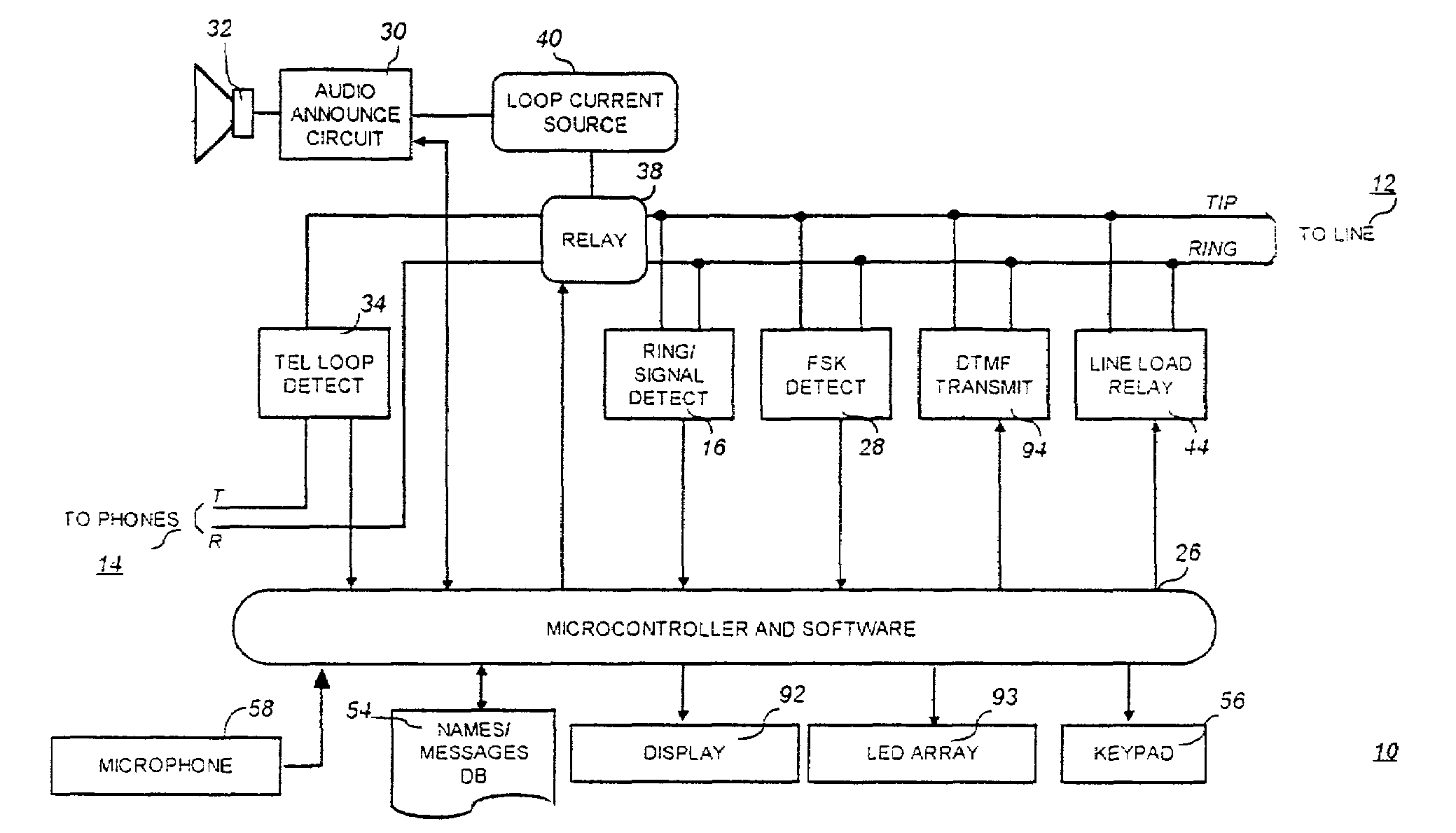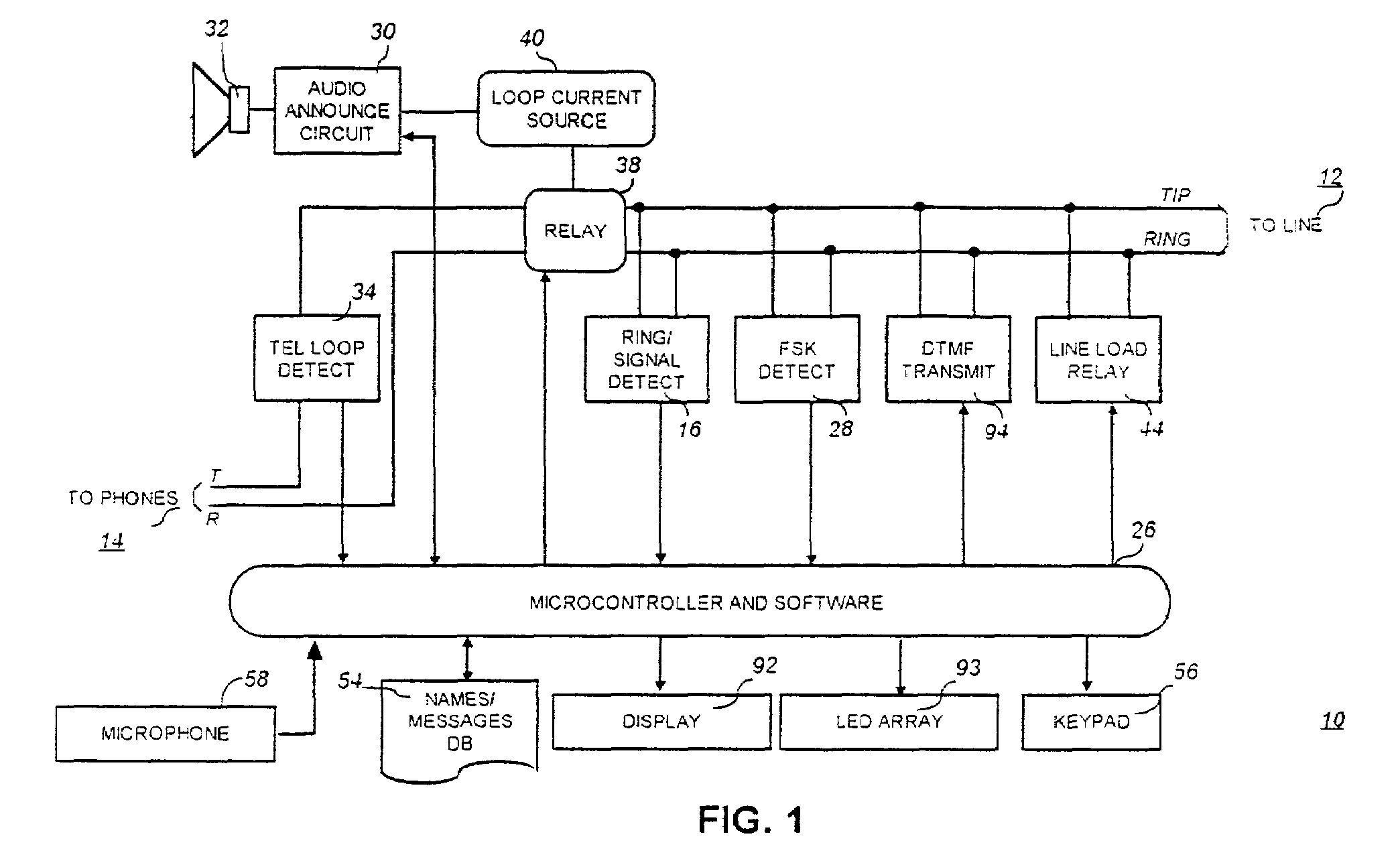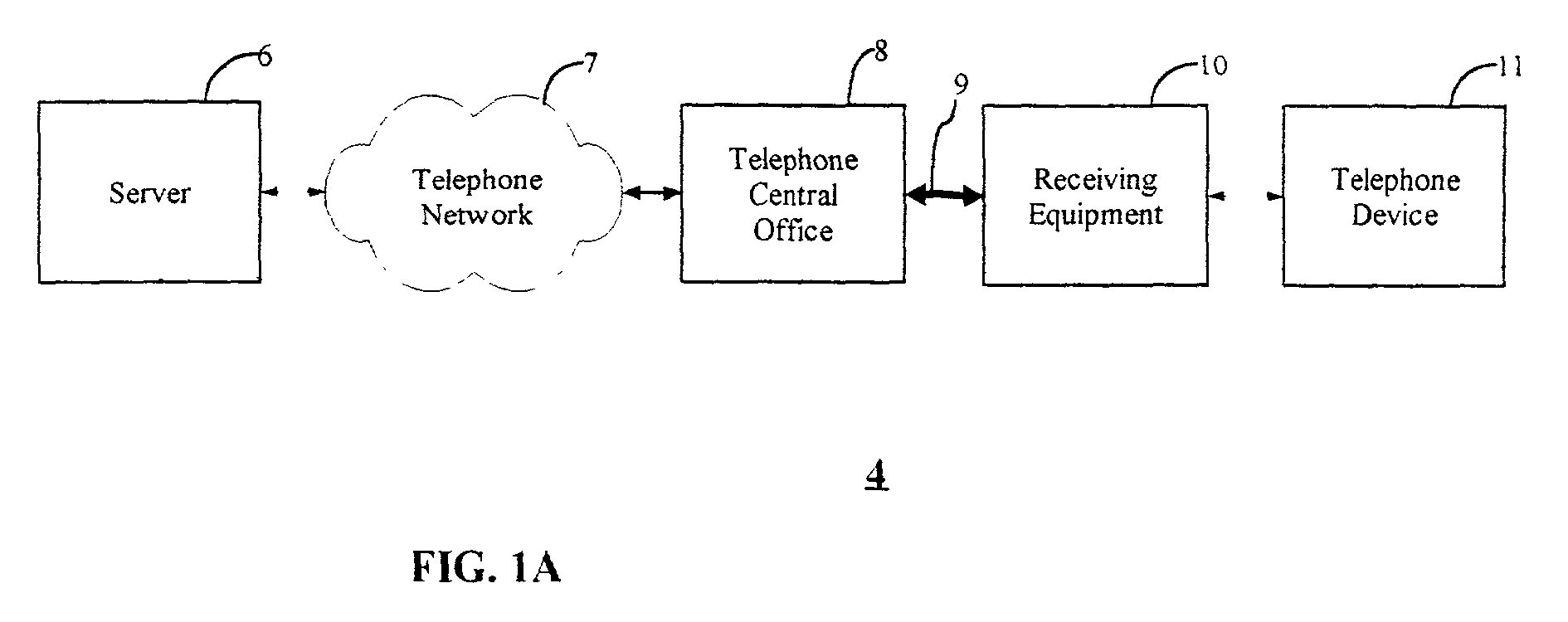Telephone network messaging
a technology of telephone network and messaging, applied in the field of messaging system, can solve the problems of little or no call bandwidth on the telephone network, and achieve the effects of reducing the amount of data being sent, enhancing the accessibility of data messages, and reducing the burden on the sending entity
- Summary
- Abstract
- Description
- Claims
- Application Information
AI Technical Summary
Benefits of technology
Problems solved by technology
Method used
Image
Examples
Embodiment Construction
[0032]A messaging system 4 is shown in FIG. 1A. This system includes a server 6 that transmits signals through the telephone network 7 to a telephone central office (or technological equivalent) 8 and then over a standard POTS telephone line 9 to be received by receiving equipment 10 located, e.g., at the customer premises. Optionally, one or more telephone set(s) 11 can be connected to receiving equipment 10.
[0033]The server 6 effects the transmission of signals in accordance with the format set forth in Bellcore GR-30-CORE, Voiceband Data Transmission Requirements “GR-30.” This is an open standard that historically has been used for sending Caller ID (ICLID) information to telephone customers, an enhanced subscriber service offered by local telephone companies for a nominal monthly charge. No special provisions are necessary at the telephone company central office switching system other than for Bellcore-standard GR-30 message types, which is now provided by generic software packa...
PUM
 Login to View More
Login to View More Abstract
Description
Claims
Application Information
 Login to View More
Login to View More - R&D
- Intellectual Property
- Life Sciences
- Materials
- Tech Scout
- Unparalleled Data Quality
- Higher Quality Content
- 60% Fewer Hallucinations
Browse by: Latest US Patents, China's latest patents, Technical Efficacy Thesaurus, Application Domain, Technology Topic, Popular Technical Reports.
© 2025 PatSnap. All rights reserved.Legal|Privacy policy|Modern Slavery Act Transparency Statement|Sitemap|About US| Contact US: help@patsnap.com



